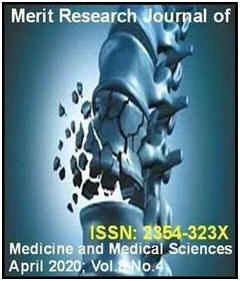
|
|
|
|
|
 |
/ / MRJMMS Home / / About MRJMMS / / Submit Manuscripts / / Call For Articles / / Editorial Board / / Archive / / Author's Guide / /
|
Other viewing option
Search Pubmed for articles by:
Jamali
YA
|
Prevalence of Eating Disorders among Students of Quest University, Nawabshah, Pakistan |
|||
|
Yasir Akbar Jamali1, Salma Farrukh Memon2, Zulfiqar Ali Lagahri3, Shakil Ahmed Shaikh4, Jamshed Warsi5 and Ashique Ali Arain6* |
||||
|
1Teaching
Assistant, Institute of Microbiology, Shah Abdul Latif
University, Khairpur
Received: 07 April 2020 I Accepted: 19 April 2020
I Published: 24 April 2020 |
||||
|
Abstract |
||||
|
This worked was
aimed at evaluating the increased risk of engineering students
with eating disorders at the University of QUEST Nawab Shah,
Sindh, Pakistan, using self-administered questionnaires. If this
disorder is early diagnosed, evaluated and better treatment is
provided, chances of full recovery are better. We planned to
conduct a survey to identify the frequency of such disturbances
among engineering students and address various strategies. A
cross-sectional, descriptive study was conducted among 427 QUEST
University engineering students. Data were collected using two
renowned self-administered questionnaires on eating disorders.
One is SCOFF and the other is Eating Attitude Test (EAT) – 26
Questionnaire. Body Mass Index (BMI) of subjects was also
measured. The data was sorted and analyzed in SPSS version 16.
According to the Eating Attitude Test (EAT-26), 35.9% of
participants were found to be at the high-risk of Eds. According
to the SCOFF, 48.9% of participants were found to be at the
high-risk of Eds. Eds risk more detected in female participants
than male participants. Risk of Eds also present in Participants
with normal BMI. Our findings highlight the prevalence of eating
disorder very high in engineering students. It is concluded that
a significant number of students, particularly women and
underage persons, are more likely to develop eating disorders.
It has been suggested that strategies should be advised to
prevent the occurrence of such diseases among students. |
Merit Research Journals© 2021 || Advertisement | Privacy policy.
